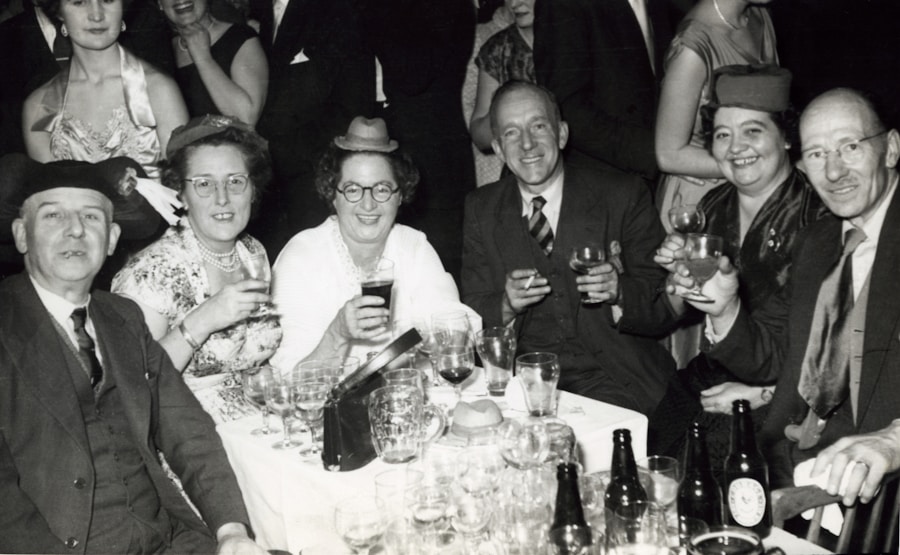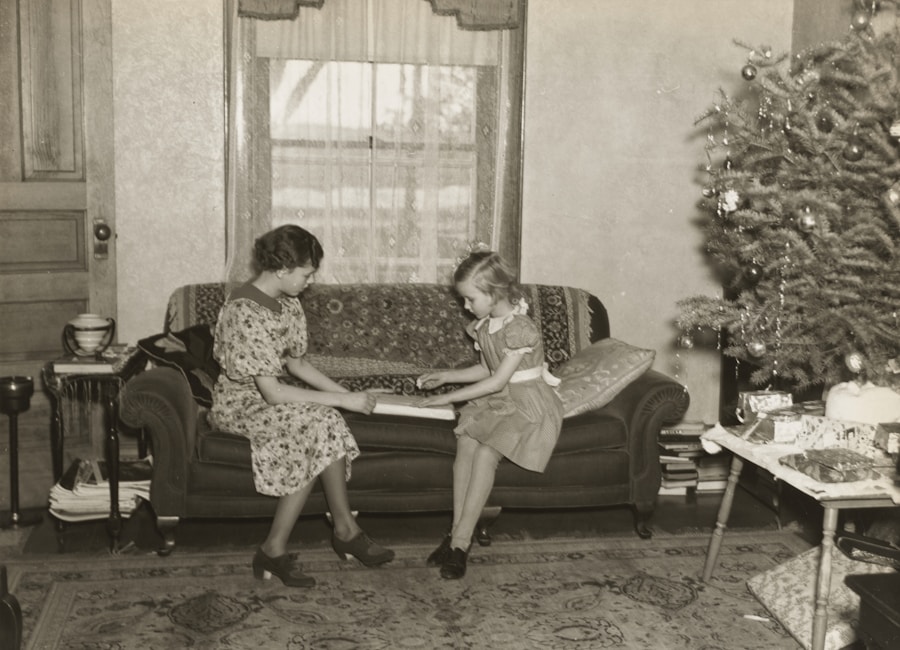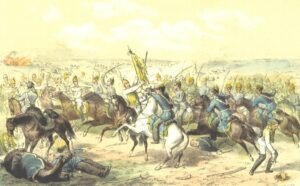The Roaring Twenties, often characterized by its exuberance and cultural dynamism, marked a significant departure from the preceding era.
The decade was defined by a sense of liberation and experimentation, as traditional norms were challenged and new ideas flourished.
Jazz music became the soundtrack of the age, with figures like Louis Armstrong and Duke Ellington leading the charge, while flappers embodied the spirit of rebellion against Victorian constraints. This cultural upheaval was not merely superficial; it reflected deeper societal shifts, including urbanization, technological advancements, and changing gender roles. In literature, the Roaring Twenties served as a fertile ground for innovation.
Writers began to explore themes of disillusionment and existential angst, often influenced by the war’s aftermath. The emergence of modernism in literature was a direct response to the chaotic social landscape. Authors like F.
Scott Fitzgerald and Ernest Hemingway captured the zeitgeist of the era through their narratives, which often depicted the struggles of individuals seeking meaning in a rapidly changing world. The use of stream-of-consciousness techniques and fragmented narratives became hallmarks of modernist literature, allowing writers to delve into the complexities of human experience in ways that had never been attempted before. This period was not just a time of change; it was an era that redefined artistic expression and laid the groundwork for future literary movements.
Key Takeaways
- The Roaring Twenties saw significant social and cultural changes, as well as technological innovations that influenced literature and art.
- The rise of the modernist novel in the 1920s brought about new literary techniques and styles, challenging traditional storytelling methods.
- Novelists of the time served as keen observers of society, using fiction as a platform for social critique and commentary on the changing world around them.
- The Great Depression had a profound impact on literature, with many writers exploring themes of economic hardship, social inequality, and the human experience during this tumultuous time.
- Women writers of the 1920s and 1930s broke barriers and challenged societal norms, contributing to the feminist movement and paving the way for future generations of female authors.
- The works of novelists from the 1920s and 1930s continue to shape and influence society, leaving a lasting legacy that resonates with readers and scholars to this day.
The Rise of the Modernist Novel: Exploring New Literary Techniques
Innovative Narrative Techniques
Writers sought to capture the fragmented nature of contemporary life, reflecting the disorientation felt by many in the wake of World War I. This led to the development of new narrative structures, such as non-linear storytelling, multiple narrative voices, and experimental uses of language.
Departure from Traditional Storytelling
Modernist writers rejected the traditional notions of plot, character, and setting, instead opting for more avant-garde approaches. They drew inspiration from other art forms, such as cubism and futurism, to create a new kind of literary experience.
Reflection of Contemporary Life
The modernist novel was a response to the rapid changes taking place in society during the early 20th century. Writers like James Joyce, Virginia Woolf, and T.S. Eliot sought to capture the disillusionment and fragmentation of modern life, creating a new kind of literary realism that was both experimental and thought-provoking.
One of the most notable techniques employed by modernist authors was stream-of-consciousness, which allowed readers to experience characters’ thoughts and feelings in real-time. This technique is exemplified in Virginia Woolf’s “Mrs. Dalloway,” where the narrative flows seamlessly between past and present, revealing the inner workings of Clarissa Dalloway’s mind as she navigates her day in post-war London.

Another significant aspect of modernist literature was its focus on subjective experience rather than objective reality. This shift is evident in works like James Joyce’s “Ulysses,” which presents a single day in Dublin through the eyes of its protagonist, Leopold Bloom. Joyce’s use of interior monologue and rich symbolism invites readers to engage with the text on a deeper level, challenging them to interpret meaning from the characters’ thoughts rather than relying on a straightforward plot.
The modernist novel often eschewed linear narratives in favor of fragmented structures that mirrored the complexities of modern life. This experimentation with form not only expanded the boundaries of literary expression but also encouraged readers to actively participate in constructing meaning from the text.
Social Critique in Fiction: Novelists as Observers of Society
As the Roaring Twenties progressed into the 1930s, novelists increasingly took on the role of social critics, using their works to comment on the pressing issues of their time. The rapid changes in society brought about by industrialization, urbanization, and shifting social norms provided fertile ground for literary exploration.
Scott Fitzgerald and John Steinbeck used their narratives to reflect on themes such as class disparity, moral decay, and the American Dream’s elusive nature. Fitzgerald’s “The Great Gatsby” serves as a poignant critique of the Jazz Age’s excesses, illustrating how wealth and social status can corrupt individuals and lead to disillusionment. Steinbeck’s works, particularly “The Grapes of Wrath,” delve into the struggles faced by ordinary people during the Great Depression. Through his vivid portrayal of migrant families seeking a better life in California, Steinbeck highlights issues of poverty, injustice, and resilience. His ability to weave social commentary into compelling narratives not only engaged readers but also raised awareness about the plight of marginalized communities. Novelists became observers of society, capturing its complexities and contradictions while advocating for change through their storytelling. This blending of art and activism marked a significant evolution in literature, as writers recognized their power to influence public discourse.
The Impact of the Great Depression on Literature
The Great Depression profoundly affected American society and culture, leaving an indelible mark on literature during the late 1920s and 1930s. As economic hardship gripped the nation, writers responded by exploring themes of despair, resilience, and social justice in their works. The stark realities faced by millions during this period prompted authors to shift their focus from the hedonistic pursuits of the Roaring Twenties to more somber reflections on human suffering and survival.
The literary landscape became a mirror reflecting the struggles of everyday people grappling with unemployment, poverty, and loss. One notable example is John Steinbeck’s “Of Mice and Men,” which tells the story of two displaced ranch workers navigating their dreams amidst economic turmoil. Through the characters of George and Lennie, Steinbeck captures the fragility of hope in a world marked by uncertainty.
The novel serves as both a poignant narrative about friendship and a critique of societal indifference toward those who are marginalized. Similarly, Zora Neale Hurston’s “Their Eyes Were Watching God” explores themes of identity and self-discovery against the backdrop of racial oppression and economic hardship. Hurston’s lyrical prose and rich character development highlight the resilience of individuals striving for autonomy in a world that often seeks to confine them.
Women Writers of the 1920s and 1930s: Breaking Barriers and Challenging Norms

Challenging Patriarchal Structures
Virginia Woolf’s essays and novels often grappled with issues surrounding women’s roles in society and the constraints imposed upon them by patriarchal structures. In works like “A Room of One’s Own,” Woolf argues for women’s intellectual freedom and financial independence as prerequisites for creative expression. Her exploration of female consciousness paved the way for future feminist discourse in literature.
Exploring Identity and Social Justice
Zora Neale Hurston’s contributions to the Harlem Renaissance highlighted African American women’s experiences through her vibrant storytelling and rich cultural depictions. In “Their Eyes Were Watching God,” Hurston crafts a narrative that celebrates female agency while addressing issues of race and gender. Willa Cather also made significant contributions during this time, focusing on themes related to rural life and women’s experiences in her novels such as “My Ántonia.” Cather’s portrayal of strong female characters navigating societal expectations reflects her commitment to challenging traditional gender roles.
A Lasting Legacy
These women writers not only enriched American literature but also laid the groundwork for future generations to explore their identities and assert their voices within a predominantly male literary canon.
Legacy and Influence: How the Works of 1920s and 1930s Novelists Continue to Shape Society
The literary innovations and social critiques presented by novelists during the 1920s and 1930s have left an enduring legacy that continues to resonate in contemporary society. The modernist techniques pioneered by authors such as Virginia Woolf and James Joyce have influenced countless writers across genres, encouraging experimentation with form and narrative structure. Their exploration of subjective experience has paved the way for contemporary literature that seeks to capture the complexities of human consciousness.
Moreover, the social critiques embedded within these works remain relevant today as issues such as inequality, injustice, and identity continue to shape our world. The themes explored by Steinbeck in “The Grapes of Wrath” resonate with current discussions surrounding economic disparity and social justice movements. Similarly, Zora Neale Hurston’s exploration of race and gender continues to inspire contemporary writers who seek to amplify marginalized voices within literature.
The contributions made by women writers during this period have also had a lasting impact on feminist literature and discourse. Their bold assertions for autonomy and self-expression have inspired generations of female authors to challenge societal norms and advocate for change through their writing. As we reflect on the legacy of these novelists from the 1920s and 1930s, it becomes clear that their works not only shaped literary history but also continue to influence our understanding of society today.
If you are interested in exploring the impact of psychology on society, you may also enjoy reading The Role of Psychology Books in Advancing Careers in Psychology. This article delves into how psychology books can play a crucial role in shaping the careers of professionals in the field. It provides valuable insights into the importance of continuous learning and self-improvement in the field of psychology.






















+ There are no comments
Add yours